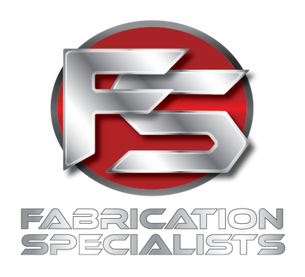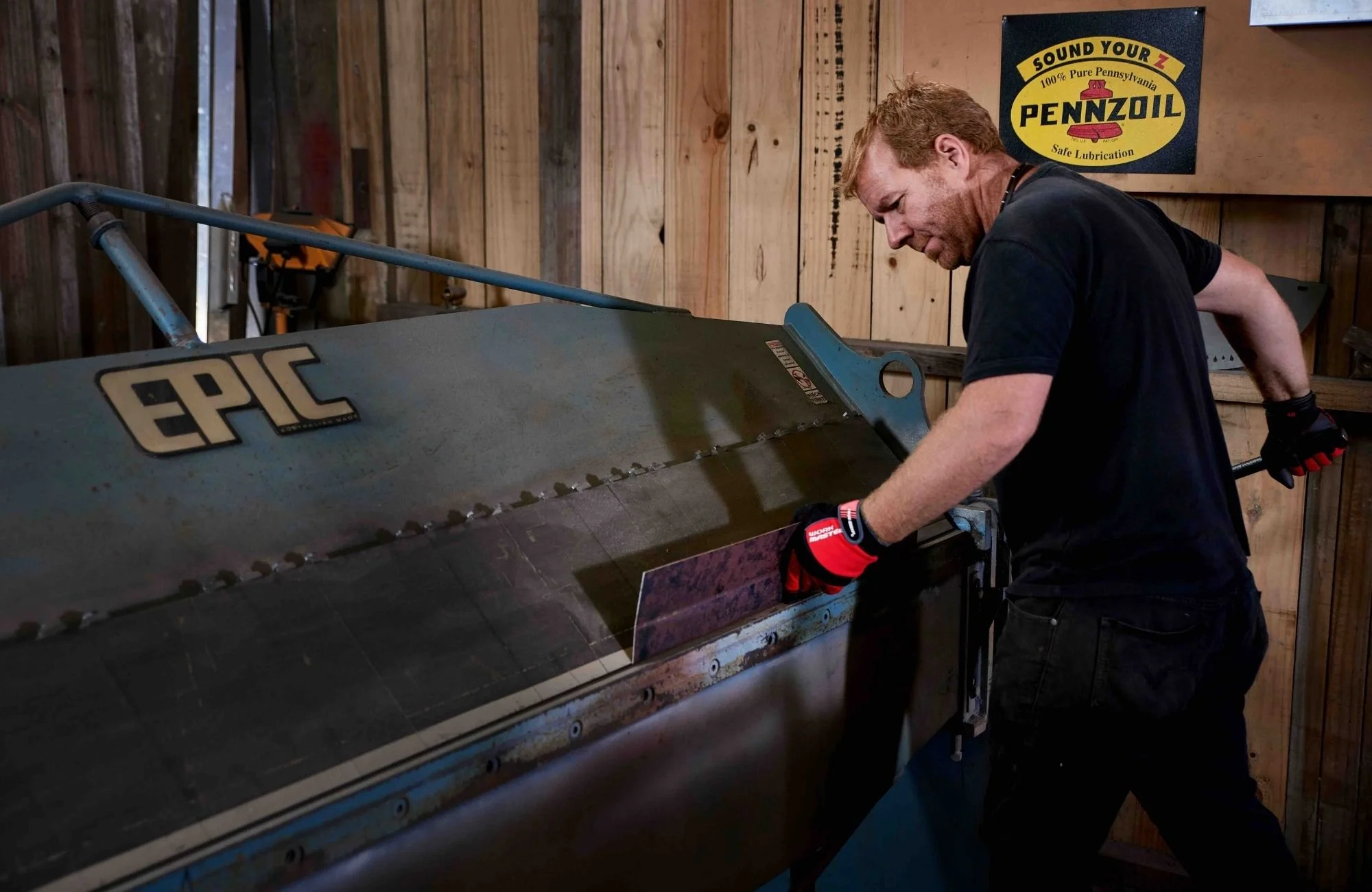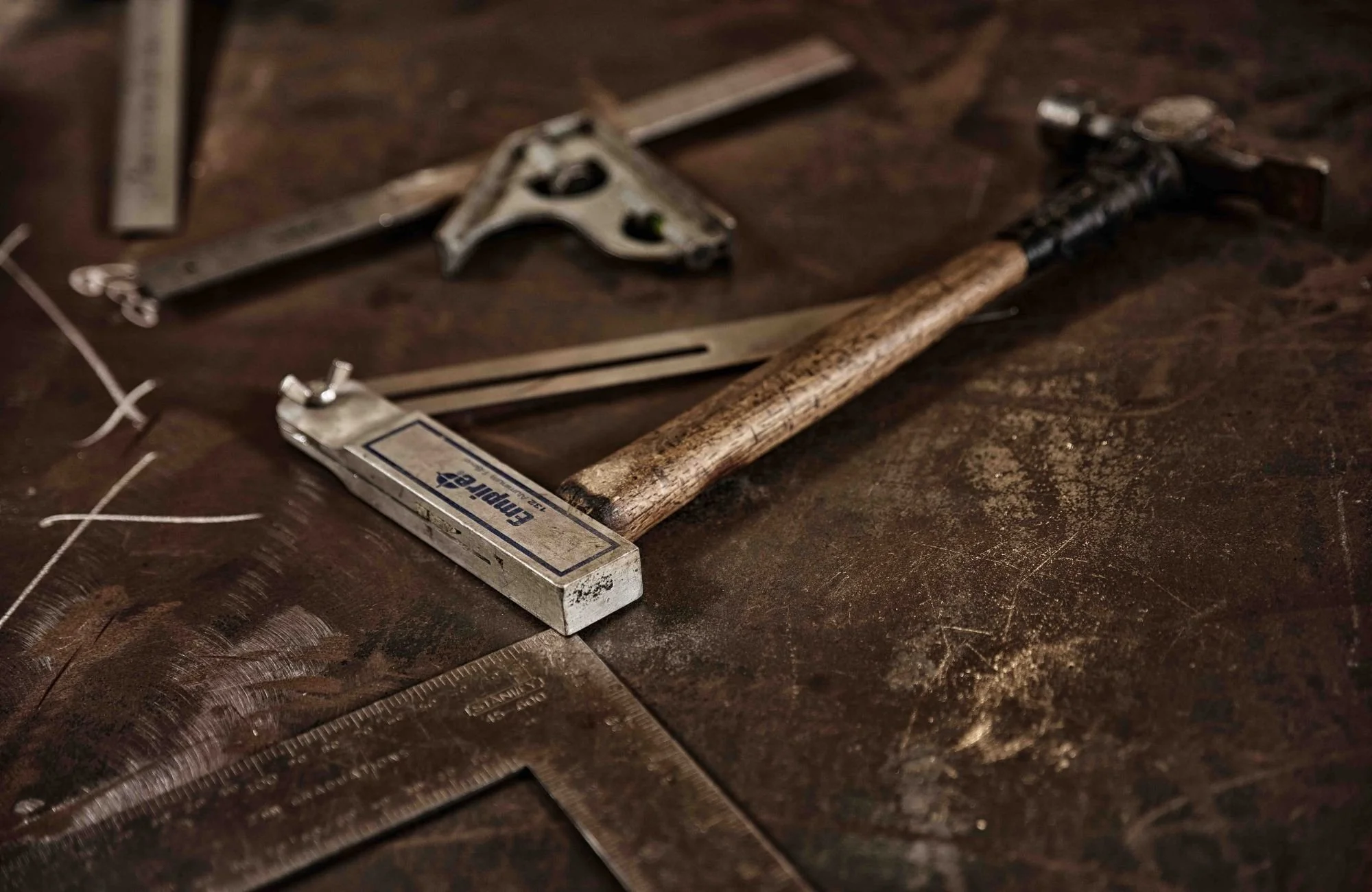Quality Control in Fabrication: What It Actually Means (And Why It Matters to Your Project)
If you're commissioning custom steelwork - whether it's feature steelwork for a high-spec home, commercial fit-out components or architectural steelwork for a building project - one question matters more than any other: how do you know you're getting quality work?
The answer isn't about the fabricator's portfolio or their workshop size. It's about their quality control process. Because quality doesn't happen by accident. It's the result of deliberate systems, clear communication and rigorous checks at every stage.
At Fabrication Specialists, we've worked with enough builders, architects and homeowners to know that understanding quality control helps you identify fabricators who deliver results - and avoid those who cut corners. This post breaks down what quality control actually looks like throughout fabrication and why it's the foundation of work you can trust.
If you're choosing a fabricator for the first time, we've also written a comprehensive guide on how to choose the right fabricator, which covers the essential questions to ask and what information should appear on your quote.
In this post:
1. What Is Quality Control in Fabrication?
Quality control in fabrication is the set of processes that ensure your steelwork is designed correctly, fabricated to specification and delivered as promised. It starts before any metal is cut and continues through to final installation.
Good quality control covers:
Clear communication about your project requirements and specifications
Accurate design and engineering that accounts for real-world constraints
Material selection appropriate to your environment and application
Fabrication methods that meet relevant standards
Inspection and testing throughout the process
Documentation that verifies compliance and protects your investment
When a fabricator has strong quality control, problems get caught early - before they become expensive. When quality control is weak or absent, you discover issues on site, during installation, or worse: years down the track when something fails.
2. Why Quality Control Protects Your Investment
Here's the reality: fabrication that doesn't meet specification costs more in the long run. Even if it's cheaper upfront.
Poor quality control leads to:
Rework and delays when components don't fit or meet spec
Installation problems that slow down your build and add costs
Performance issues where steelwork doesn't perform as designed
Durability failures such as premature corrosion or structural concerns
Compliance problems that require remedial work or re-certification
For homeowners, this means your investment doesn't deliver what you paid for. For builders and project managers, it means schedule delays, cost blowouts and difficult conversations with clients.
Quality control isn't a cost - it's what prevents these problems from happening. It's the systematic approach that catches issues early, ensures components are built to spec and delivers fabrication that performs as designed.
3. Understanding What Quality Control Actually Covers
Quality control in fabrication is comprehensive. It touches every aspect of your project, from initial conversations through to final delivery. Here's what it encompasses:
Clear Communication and Specification Quality control starts with understanding exactly what your project needs. This means detailed discussions about requirements, constraints, standards and expectations. Without this foundation, even perfect fabrication might miss the mark.
Accurate Design and Engineering Your steelwork needs to be designed to perform in the real world - accounting for loads, environmental exposure, tolerances and how components integrate with the rest of your build. Quality control includes verifying that designs are complete, accurate and buildable.
Material Selection and Verification Not all steel is created equal. Quality control means selecting materials appropriate to your application and environment, verifying material specifications and maintaining traceability through material certificates. In Auckland's coastal climate, this attention to material selection is critical.
Fabrication Methods and Standards How steel is fabricated matters as much as what materials are used. Quality control ensures fabrication follows relevant standards (such as AS/NZS 1554), uses appropriate welding techniques and applies proper heat treatment where needed.
Inspection Throughout the Process Rather than checking quality at the end, quality control means continuous inspection throughout fabrication. Dimensions are verified, welds are checked and components are confirmed against specifications at every stage.
Testing and Verification For certain applications, testing is essential. This might include pressure testing for piping systems, weld testing for structural components or coating thickness verification for corrosion protection. Quality control includes arranging these tests and documenting results.
Documentation and Traceability Complete documentation is part of quality control. This includes material certificates, inspection records, test results and Producer Statements where required. This documentation verifies that work meets specification and provides protection for your investment.
4. How Quality Control Works Throughout Your Project
Quality control isn't a single checkpoint - it's a process that runs through every stage of your project:
Pre-fabrication Before any cutting or welding starts, quality fabricators verify specifications, confirm material availability, review drawings and identify potential issues. This is where problems get caught cheaply.
During fabrication Throughout the fabrication process, components are checked against specifications. Dimensions are verified, welds are inspected and materials are confirmed. This continuous checking prevents errors from compounding.
Pre-delivery inspection Before components leave the workshop, they're inspected against the final specification. This includes checking dimensions, finish quality and completeness. If something doesn't meet spec, it gets corrected before it reaches your site.
Documentation and handover Quality fabricators provide documentation that verifies what's been delivered: material certificates, inspection records, test results where relevant and any Producer Statements required for compliance. This documentation is part of the delivery - not an optional extra.
When quality control operates at each of these stages, you get fabrication that's been checked, verified, and delivered as promised.
5. Quality Control and Cost: Understanding the Difference
The cheapest fabrication quote is rarely the best value. Here's why:
A low quote typically means corners are being cut somewhere:
Materials: Using cheaper grades or substituting materials that don't suit your environment
Design time: Minimal design review or engineering input, leading to fit and performance issues
Fabrication methods: Faster processes that compromise precision or durability
Quality checks: Reduced inspection and testing, meaning problems aren't caught until installation
Documentation: Minimal or absent documentation that can cause compliance and warranty issues
The true cost of cheap fabrication shows up later: in rework, delays, performance problems or premature failure.
Quality fabrication costs more upfront because it includes:
Proper material selection for your specific application
Design time to ensure components fit and perform as required
Fabrication methods that meet standards and deliver precision
Inspection and testing throughout the process
Complete documentation that verifies compliance and protects your investment
For homeowners, this is what separates a project you're proud of from one you regret. For builders and project managers, it's what keeps projects on track and on budget.
6. What Quality Control Looks Like at Fabrication Specialists
We don't talk about quality control because it sounds good. We talk about it because it's how we work.
Every project starts with clear communication: understanding what you need, what constraints exist, and what standards apply. We provide detailed quotes that remove ambiguity, so you know exactly what you're getting. We work to documented standards - including AS/NZS 1554 compliance, specialist welding certifications and independent testing where needed.
Throughout fabrication, we check dimensions, inspect welds and verify materials. Before delivery, components are inspected against final specifications. And when the job is complete, you receive documentation that verifies compliance and protects your investment.
This approach takes longer. It costs more than cutting corners. But it's what delivers fabrication you can trust - built to spec, designed to last and backed by the processes that make quality possible, supported by comprehensive workshop capabilities that keep fabrication in-house and under our direct control.
We're proud of this approach because it reflects how we think about every project: your steelwork deserves the same care whether it's a one-off residential feature or a larger commercial contract.
7. Making the Right Choice
If you're commissioning fabrication for the first time - or if you've been burned by poor quality in the past - understanding quality control helps you identify fabricators who deliver results.
For a comprehensive guide on choosing the right fabricator, including the essential questions to ask and what information should appear on your quote, read our detailed post on how to choose the right fabricator.
Look for fabricators who:
Have documented quality control processes at every stage
Work to recognised standards and can explain which apply to your project
Provide comprehensive documentation that verifies compliance
Communicate clearly and proactively throughout the project
Take responsibility when issues arise
And remember: the cheapest quote is rarely the best value. Quality control costs money. But poor quality costs more.
Ready to work with a fabricator who takes quality control seriously? Get in touch with Fabrication Specialists. We'll understand your project, provide a detailed quote that removes surprises and deliver steelwork built to spec and designed to last. Contact us today for a consultation.


